Your home’s roof never gets a day off from exposure to weather and other factors that can compromise its condition and performance. This is why damage can prove inevitable even for the strongest roof systems. In this post, you’ll learn about the most common factors that can wreak havoc on any roof.
-
Roof Age
Just like anything, a roof will age. And once a roof reaches its life expectancy, it becomes more susceptible to damage. Essentially, your roof’s aging is one of the things that you cannot avoid. But, knowing your roof’s age and its average life expectancy will give you an idea if the problems you encounter are age-related. Furthermore, this should also prompt you to have maintenance repairs performed as soon as possible.
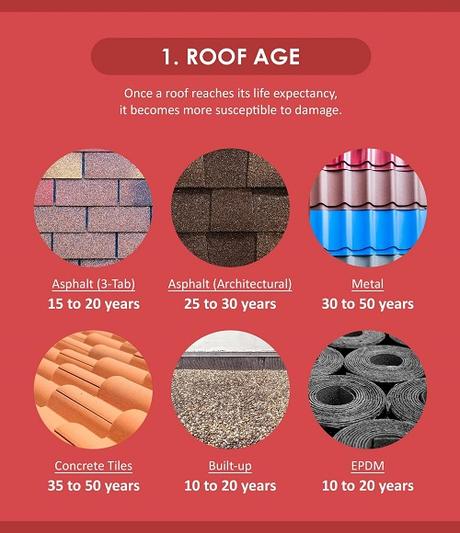
Below are the life expectancies of some of the most common types of roofing materials and systems:
- 3-Tab Asphalt Shingles – 15 to 20 years
- Architectural Shingles – 25 to 30 years
- Metal Roofing – 30 to 50 years
- Concrete Tiles – 35 to 50 years
- Built-up Roofing – 10 to 20 years
- EPDM Roofing – 10 to 20 years
Ideally, you should not wait until your roof gets old before you have it inspected for damage. But if, like most property owners, you haven’t done so yet, call a trusted roofer now for an inspection, especially if your roof is already close to its life expectancy.
-
Poor Maintenance
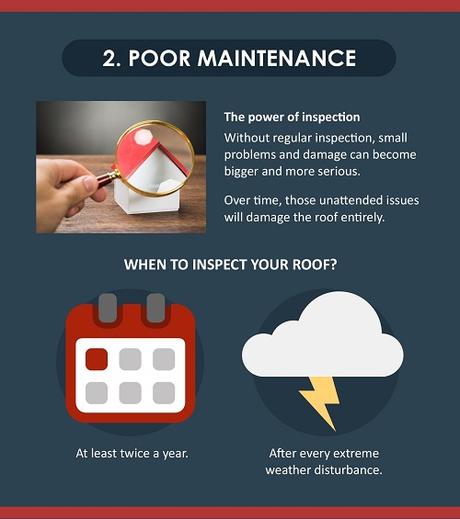
As mentioned above, you should not wait until your roof gets old and begins to show signs of damage before you have it inspected. This is because inspection plays a vital role in roof maintenance.
A roof that does not get checked for problems is a roof that is likely to harbor those very problems without you knowing. Without regular inspection, small problems can become bigger and more serious, making them more difficult to repair and solve. Over time, those unattended issues will prove costly.
So, when is the best time to inspect a roof? Professionals recommend subscribing to a maintenance plan that includes twice-a-year inspections. You should also have your roof checked after every major weather disturbance.
-
Wind Damage
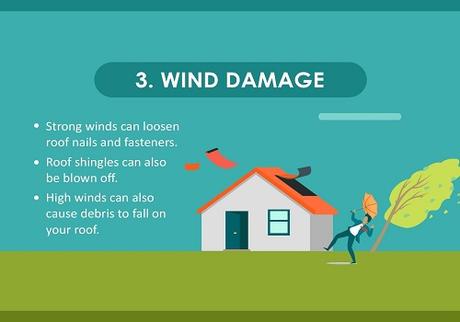
Typically, storms come with strong winds, which can cause grave damage to your roof. Wind can easily loosen nails and fasteners, particularly if they have not been securely installed or have been in service for quite a while. Roof shingles can also be blown off. Furthermore, high winds can also cause debris such as tree branches, or even a tree itself, to fall on your roof.
-
Other Weather Damage
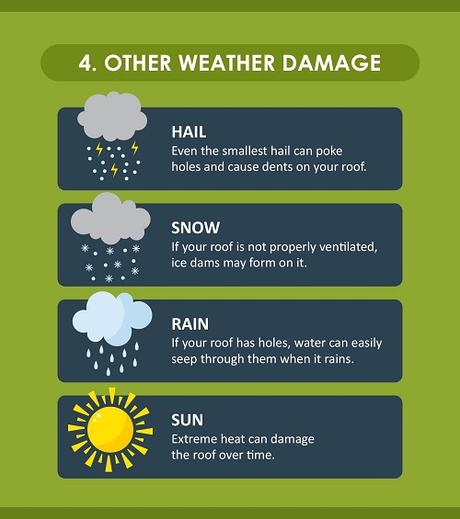
Aside from strong winds, other weather events can prove destructive for your roof.
- Hail – Even the smallest hailstone can poke holes and cause dents in your roof.
- Snow – If your roof is not properly and adequately ventilated, ice dams can easily form when it snows.
- Rain – If your roof has holes that haven’t been repaired, water can seep through them when it rains.
- Sun – Your roof is exposed to the sun almost the entire year. Extreme heat can damage and deteriorate roof materials over time.
-
Problematic Flashing
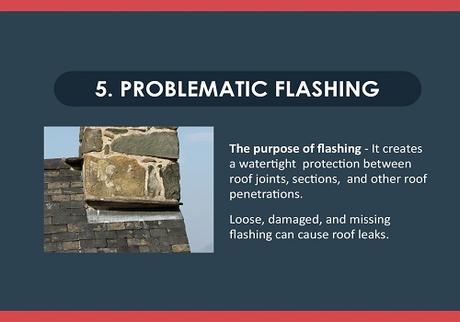
Flashing is installed to create a watertight protection between roof joints, sections, and other roof penetrations.
If the flashing in those areas is loose, missing, or damaged, your roof can leak at the joints and seams.
-
Inadequate Roof Ventilation
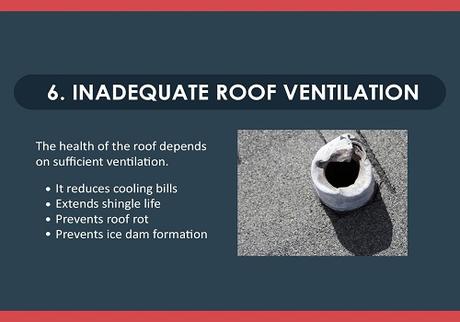
The health of a roof largely depends on whether or not it has sufficient ventilation. Roof ventilation does the following:
- Reduces cooling bills.
- Keeps the roof cool, extending shingle life.
- Prevents moisture buildup, avoiding roof rot.
- Prevents the formation of ice dams during winter.
Why Repair Your Roof? (Instead of Replacing it Entirely)
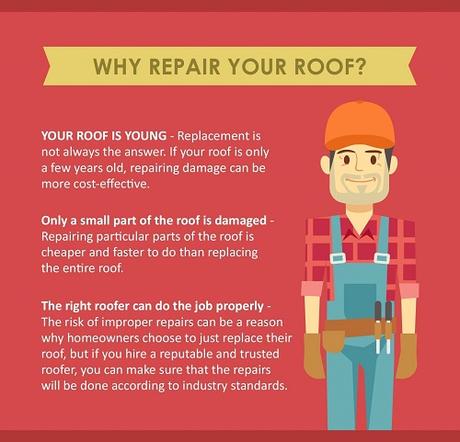
Roof repair and replacement both have their own advantages. However, choosing which solution is right for your roof will depend on a number of things: your roof’s age, the extent of damage, and your budget. Full roof replacement is naturally costlier than roof repair, so knowing when to choose repair over replacement will allow you to resolve any immediate issues, allowing you save on costs.
Check out these considerations to know if a repair is best for your roof:
- Your roof is still young. If your roof is only a few years old, replacing it would be a waste, unless of course most of it has been damaged by a storm, for instance. Repairing damage can be more cost-effective.
- Only a small part of the roof is damaged. As mentioned, a replacement is most advisable if a large part of the roof has been damaged. If not, repairing particular parts of the roof is generally cheaper and faster.
- The right roofer can do the job properly. Many homeowners choose to just replace their roof because they are worried about the risk of improper repairs. However, if you hire a reputable, experienced, and trusted roofer, you can rest assured that the repairs will be done according to industry standards.
Any roof issue must be attended to immediately to prevent compounding the damage further. By having a professional and trusted roofer perform repairs on your roof, you can save it–and yourself–from more problems.
============================================================
Author Bio:
Greg Tittle is the owner of Tittle Brothers Construction. After serving in the US army, he started his career in home sales in the professional construction industry in 1991. With a passion for sharing advice and tips to people, he also enjoys spending time with his family and friends. Learn more about him and the work he does at the Tittle Brothers Construction blog.
============================================================
